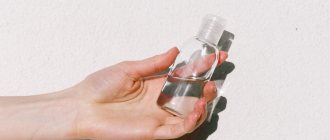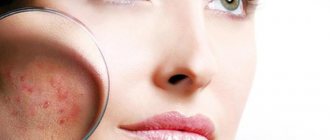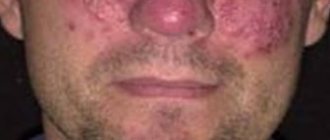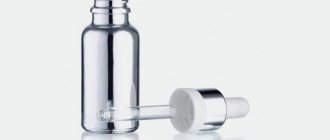Fluconazole - indications for use
His range of prescriptions is very wide, since fungal infections can bother any person in cases where he has a reduced immune system. Candidiasis of the mucous membranes and skin is not dangerous in itself and is easily treatable. For example, in mild cases of thrush, it is enough to take just one Fluconazole capsule once. But problems arise when the fungus penetrates deep into organs and tissues; in such cases we are talking about systemic mycosis. Fortunately, the generalized form is rare and is treated by hospital doctors. In this article we will list general indications and focus on the over-the-counter form of the drug Fluconazole. Despite the safety and ease of taking the drug, we still do not recommend self-medication.
- vaginal candidiasis;*
- candidiasis on the mucous membranes of the oral cavity (oropharyngeal candidiasis), esophageal candidiasis;
- chronic candidiasis of the oral cavity in patients using dentures;*
- candidal balanitis (fungal inflammation of the male genital organ);*
- invasive (systemic) candidiasis;
- candiduria - (fungi of the genus Candida in the urine);
- chronic candidiasis on the skin and mucous membranes;
- dermatomycosis, including: dermatophytosis of the feet, trunk, groin, lichen versicolor and cutaneous candidiasis, when systemic therapy is prescribed;
- dermatophytosis of the nails (onychomycosis), when therapy with other drugs is impossible;
- cryptococcal meningitis;
- coccidioidomycosis.
* when local treatment is not applicable.
In cases where the patient’s immune system cannot cope, Fluconazole is prescribed to prevent relapses:
- cryptococcal meningitis;
- candidiasis of the oral cavity and esophagus in HIV-infected patients;
- vaginal candidiasis (if symptoms of thrush appeared 4 times a year or more);
- for the prevention of candidiasis in patients with prolonged neutropenia (with hematologic malignancies undergoing chemotherapy or hematopoietic stem cell transplantation).
Reviews
Victor, 26 years old, Syzran. I read good reviews about how people got rid of fungus using Neumyvakin’s method. At first I thought that antifungal drugs would be more effective, but then I decided to use traditional methods. Despite the dubiousness of the method, the fungus was cured quickly.
Daria, 39 years old, Moscow. Nail fungus appeared suddenly after going to a public bath. It was a pity to spend money on expensive ointments, so I decided to treat my nails with hydrogen peroxide. At first the skin was very dry, but when I began to lubricate the area around the nail with a special cream, the discomfort disappeared
In the video, Professor Neumyvakin briefly and clearly talks about how to cure fungus.
Fluconazole - instructions for use
The capsules are swallowed with water. Patients usually ask how to take it - before or after meals? In this case it does not matter, food does not affect bioavailability.
- Chronic atrophic candidiasis of the oral cavity when wearing dentures is prescribed in a dose of 50 mg 1 time / day. for 2 weeks in combination with local antiseptic treatment.
- Acute vaginal candidiasis, balanitis, complicated by fungi of the genus Candida, Fluconazole is prescribed once orally in a dose of 150 mg. To prevent relapses of vaginal candidiasis, use 150 mg every three days - a total of 3 doses (on the 1st, 4th and 7th day), then 150 mg once a week for maintenance. Maintenance therapy, if necessary, can be carried out for up to 6 months.
- Dermatomycoses. Skin infections, including dermatophytosis of the feet, trunk, groin area, for candidal infections, the dose is 150 mg once a week or 50 mg once a day. The duration of treatment is usually 2-4 weeks; for foot infections, therapy up to 6 weeks is possible.
- Lichen versicolor - 300-400 mg 1 time/week for 1-3 weeks or 50 mg 1 time per day for 2-4 weeks (depending on the regimen, the patient buys a dosage of 150 mg or 50 mg).
- Nail fungus (onychomycosis) - 150 mg 1 time/week, treatment should continue until the infected nail is replaced with a healthy one. This may take several months.
Who is Professor Neumyvakin
Neumyvakin is a professor whose track record includes more than 200 scientific publications, and in his works he paid special attention to the positive effects of hydrogen peroxide on the body.
It is important to note that Academician Neumyvakin dealt with issues that, from the point of view of modern scientists, are pseudoscientific. Being a specialist in alternative healing methods and esotericism, the academician criticized official medicine and considered the scientific approach to the treatment of pathology to be fundamentally wrong.
According to his theory, there are no diseases, there is only an imbalance of body systems in which the body cannot function correctly. He saw the reason for this phenomenon in the process of digestion. After food enters the stomach, it is digested with the help of hydrochloric acid produced by the walls of the organ. Since many people prefer to wash down their food with water, the gastric juice is diluted, which means that the food cannot be digested correctly, it rots in the digestive tract, loads the liver, promotes the proliferation of pathogenic microorganisms, and causes intoxication due to slagging.
Modern doctors share Neumyvakin’s opinion that it is undesirable to wash food down with water. Otherwise, science refutes the view of the Soviet academician on the functioning of the body, especially since nail fungus does not exist in the body, manifesting itself when immunity decreases, but is transmitted from person to person through close contact. However, treatment of nail fungus according to Neumyvakin is still not a popular method.
How to take Fluconazole for thrush?
With this pathology, patients can purchase medicine without a prescription and on the advice of a pharmacist. If you visit a doctor, he will confidently prescribe Fluconazole even before receiving test results for pathogens. Later, if the examination results are available, the doctor will only need to adjust the treatment regimen, or continue the chosen tactics. Fluconazole capsules help very quickly.
When taken orally, the level of bioavailability of the drug is as high as when administered intravenously, so it is enough to take one 150 mg capsule once with water. To prevent symptoms from returning, it is possible to take the drug every three days, with a total of 3 doses - on days 1, 4 and 7.
Fluconazole can begin to work within a day. In particular, the manufacturer of the original drug Pfizer (Diflucan) specifically reports that relief occurs within 24 hours. However, it is necessary to consult a doctor in order to exclude the presence of other pathogenic agents.
Fluconazole 150 mg
Thrush itself is not a sexually transmitted infection. Candidiasis develops against a background of reduced immunity, for example, after using antibiotics, when wearing synthetic underwear, during periods of very hot weather and even under stress. During a visit to the doctor, patients must be informed about the presence of a sexual partner so that preventive or therapeutic measures can be prescribed.
Women often ask the question: can cystitis appear from thrush? In this case, only the doctor can give an objective answer. The development of cystitis against the background of thrush is a very real scenario if the patient ignores visiting a specialist. Yeast-like fungi travel from the urethra to the bladder and cause inflammation there. Symptoms of vaginal candidiasis and cystitis may be similar. In the future, the infection from the bladder can reach the kidneys and there lead to acute renal failure. Therefore, therapy must be started on time. Sometimes women do not have candidiasis, but it develops after treating cystitis with antibiotics. A doctor will help correct the unpleasant effect.
Types and signs of fungus
Even a small nuisance can turn into a big problem when the onset of the disease is missed. A striking example is onychomycosis, a fungal nail disease.
The first signs of infection depend on the type of pathogen:
- Dermatophytes - provoke yellow spots, stripes on the sides of the nail plate, causing itching and peeling.
- Yeast fungi cause redness of the skin, scales appear along the edges of the nail, and the plate becomes thinner.
- Mold fungi - settle on the surface of the sore finger, changing its color from pale yellow to black.
Based on the location of the disease, four forms are determined:
- distal (when the plate is affected from the side of the free edge),
- lateral (changes in the sides of the nail),
- proximal (the parasite appears on the posterior fold of the nail),
- total (here the entire plate has been changed).
The disease is divided into three types, with characteristic symptoms:
- the color of the plate changes, stripes and inclusions appear, the thickness of the nail plate remains normal, called “normotrophic”,
- the shine disappears, the color changes, the plate thickens, it is called “hypertrophic”,
- part of the affected nail is rejected - an atrophic type of disease.
Can Fluconazole be used during breastfeeding and pregnancy?
The use of the drug during pregnancy should be avoided, with the exception of severe or life-threatening systemic fungal infections, when the expected benefit of therapy for the mother outweighs the possible risk to the fetus.
Women of childbearing age should also use reliable methods of contraception during treatment with Fluconazole and for at least a week after taking the last dose. Since there is information about cases of spontaneous abortion and the appearance of congenital pathologies in children whose mothers received Fluconazole at a dose of 150 mg once or repeatedly in the first trimester of pregnancy.
When pregnant women take increased doses for a long time in the first trimester, the number of defects in infants also increases: curvature of the femurs, impaired formation of the cranial vault, brachycephaly, impaired development of the facial part of the skull, cleft palate, thinning and elongation of the ribs, arthrogryposis and congenital heart defects.
Fluconazole passes into breast milk, so use during breastfeeding is prohibited.
Routes of infection
The risk of becoming infected with fungus is especially high in public places with high humidity. These are saunas, swimming pools, gyms, public baths, etc. The most common routes of infection:
- direct contact with an infected person. Here the fungus moves from its habitat to healthy areas, thereby causing an infection;
- household way. In this case, infection occurs when using the patient’s personal belongings: shoes, personal hygiene items, etc.
Can I take Fluconazole while taking antibiotics?
Combinations of antibiotics and antifungal agents are determined only by a doctor. If after treatment with antibiotics the patient develops candidiasis, the use of Fluconazole is possible. But simultaneous use is not always possible due to the fact that the medicine actively interacts with other substances. Some antibiotics, cardiovascular drugs, psychotropic drugs and many others are at risk. Therefore, the patient must be informed about all his concomitant diseases and medications taken.
What is toenail fungus
The medical name of the disease is onychomycosis. It is caused by dermatophyte fungi of the genus Trichophyton, less commonly Epidermophyton and pathogens of microsporia (ringworm). Fungal infection of the nail plate is not a cosmetic defect, it is a serious disease that has its own code according to the international classifier of diseases ICD-10. Onychomycosis can involve some areas of the nail plate or the entire nail (then doctors call it total). In Russia, a classification has been adopted based on the appearance of the nail (photos can be found online):
- normotrophic – stripes, spots while maintaining the normal shape and thickness of the nail,
- hypertrophic - the plate grows in width, changes color, loses its shine, thickens, begins to crumble,
- onycholytic - the affected part dies and is torn away from the bed.
If there is still a problem
Clinical manifestations of the disease increase gradually: visual acuity decreases, glare and double vision occur. Doctors recommend surgery when the quality of life begins to suffer. That is, a person experiences difficulties with everyday activities - reading books, driving a car or carrying out professional activities. All preventive measures, be it diet or physical activity, will not help get rid of the problem.
The surgical intervention consists of minimally traumatic removal of the lens and installation of an artificial lens in its place. The entire procedure takes from 30 to 45 minutes, is performed under local anesthesia and involves a quick recovery. After a few hours, the patient is sent home, where he spends the first day alone, following the recommendations of specialists.
Lens extraction is one of the safest operations. Once in the hands of professionals, you can get rid of visual discomfort. And the possibilities of modern microsurgery will make the recovery period quick and comfortable.
How to prepare your nails for hydrogen peroxide treatment
Dr. Neumyvakin advises starting with preparatory work to treat nail fungus directly with perhydrol. Foot baths will help you do this.
Water is poured into any convenient container, soda is added to it at the rate of 1 tsp. soda per 1 liter of water. The solution should not be cold, but it should not be used too hot either - the legs should be steamed and not burned.
The appropriate temperature is popularly called “tolerable.” You need to keep your feet in the water for 10 to 20 minutes. After the procedure, they need to be dried with a towel.
Don't miss useful advice from doctors on: How to treat itchy body skin and why does it appear? Main reasons.
Risk factors
The incidence of onychomycosis increases by age 60. At this time, the probability of developing such an infection is 60%, which is explained by a slowdown in metabolism, especially in the distal (remote) parts of the body, which are the fingers and toes.
Other risk factors for developing nail fungus include:
- diabetes;
- varicose veins;
- injuries to nails and adjacent tissues;
- HIV and other immunodeficiency conditions;
- long-term use of antibiotics;
- weakened immune system;
- vascular and skin diseases, dermatitis, diaper rash;
- disturbances in the blood supply to the extremities;
- insufficient hygiene.









